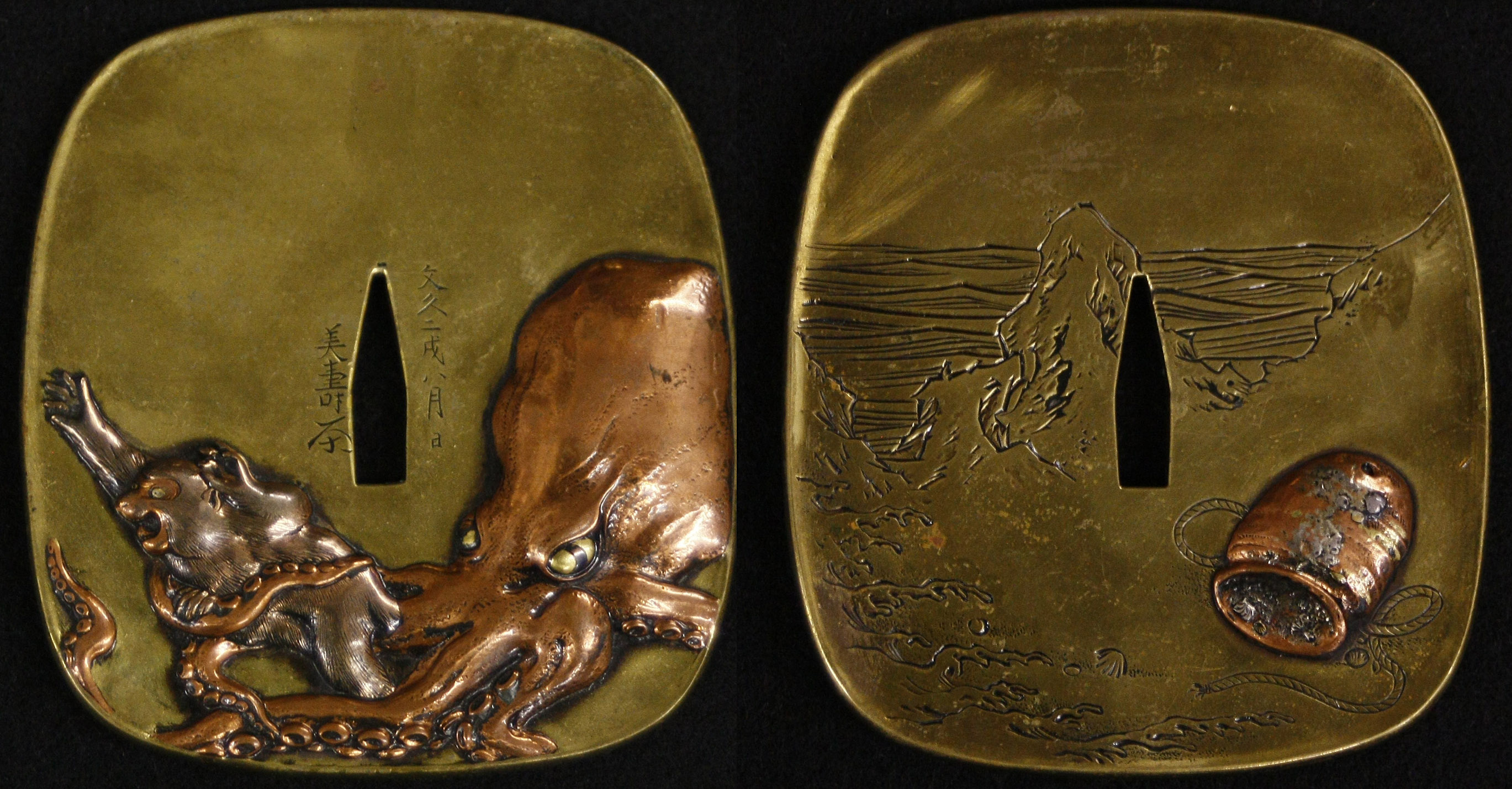Project Description
A tsuba is the ring that separates the handle from the blade in traditional Japanese sword making. This tsuba is a great example of late Edo period metalwork. The Edo period was characterized by a united, isolationist Japan and a long era of peace. With the extended period of peace, tsubas reached previously unheard of levels of decoration. Rather than being used for wartime purposes, the blades of the samurai class in the Edo period were status symbols. Tsubas in the Edo period became increasingly intricate and decorative, despite limitations on what kind of forms were acceptable for the shape of a tsuba. The tsuba depicted here is in the kaku maru gata shape, and the school of tsuba manufacture has been identified as the Garyuken line of the Nara school. This particular tsuba depicts an octopus attacking a Japanese ape, while the reverse side depicts a rocky shore with a takotsubo, or octopus trap. The tsuba is one of sixteen within a collection presented to Berea College as a gift of Frank Gunsaulus in 1978. The sixteen tsubas are each decorated in different ways, some are very simple, and others are elaborate. The tsubas, as well as other pieces of East Asian art from the Berea College collection are included in the ASIANetwork database, an online compilation to be used for educational purposes. Numerous liberal arts institutions participate in the Network, allowing for a diverse array of Asian artwork to be shared.
-Constantine Botimer, Class of 2019

